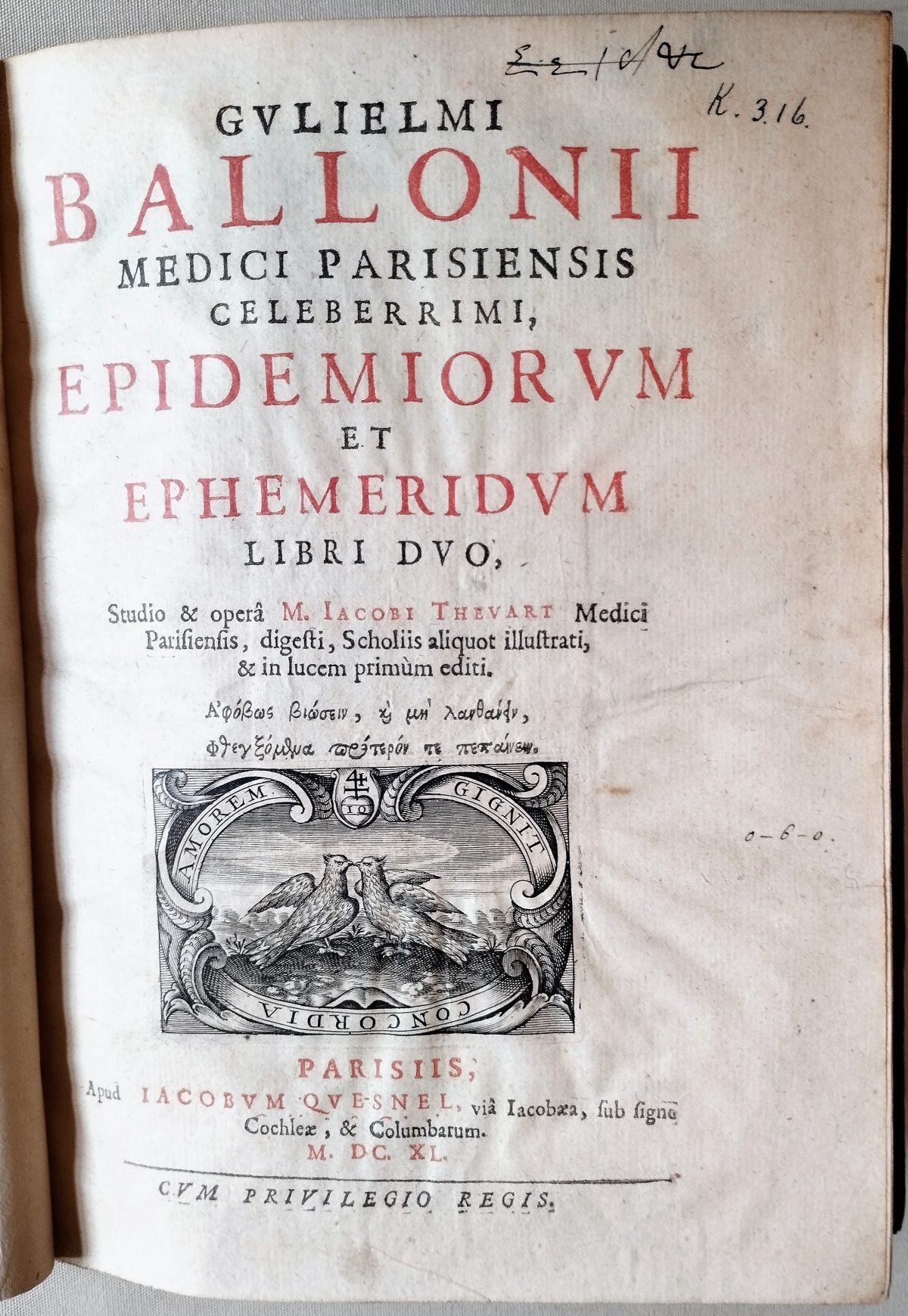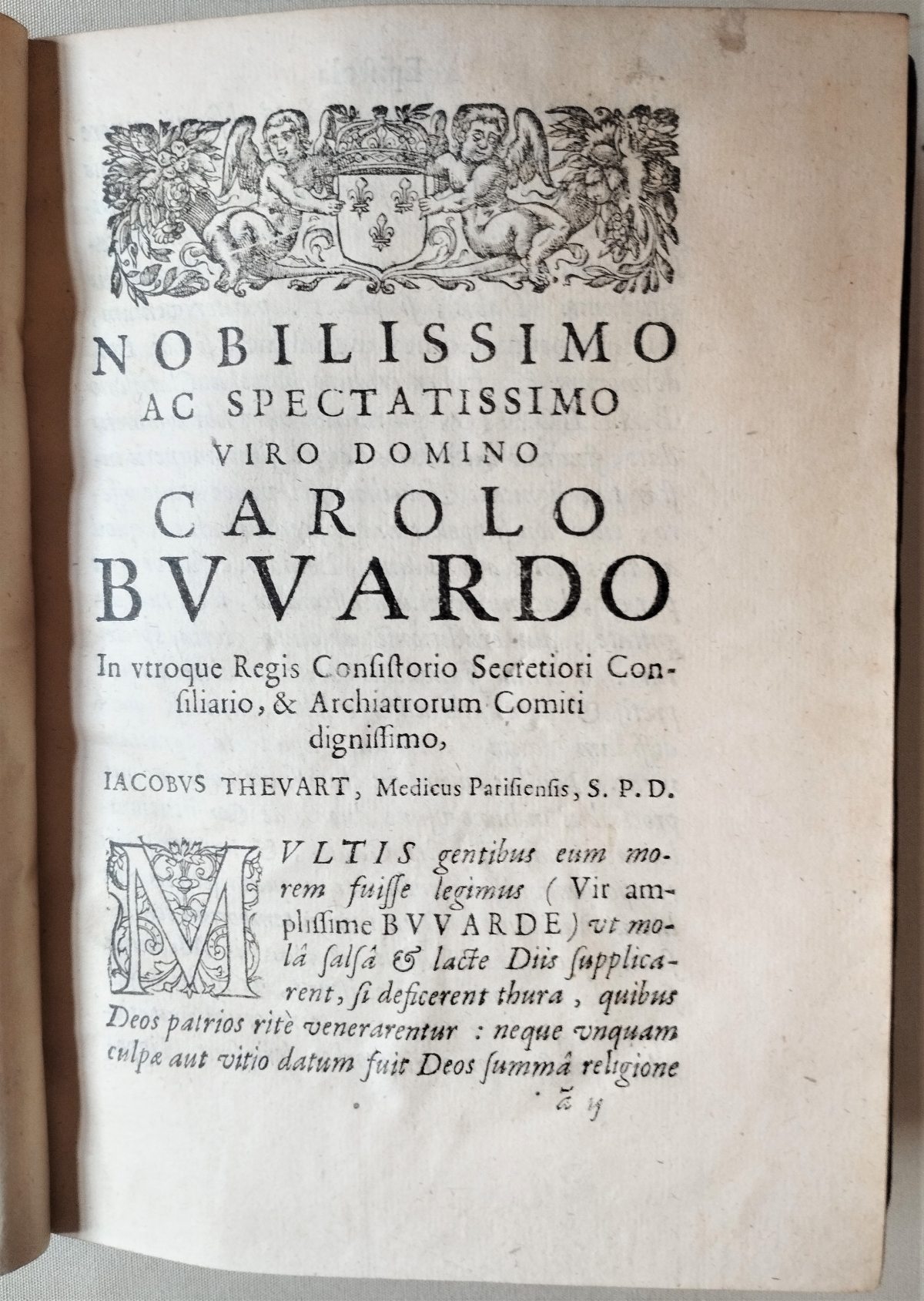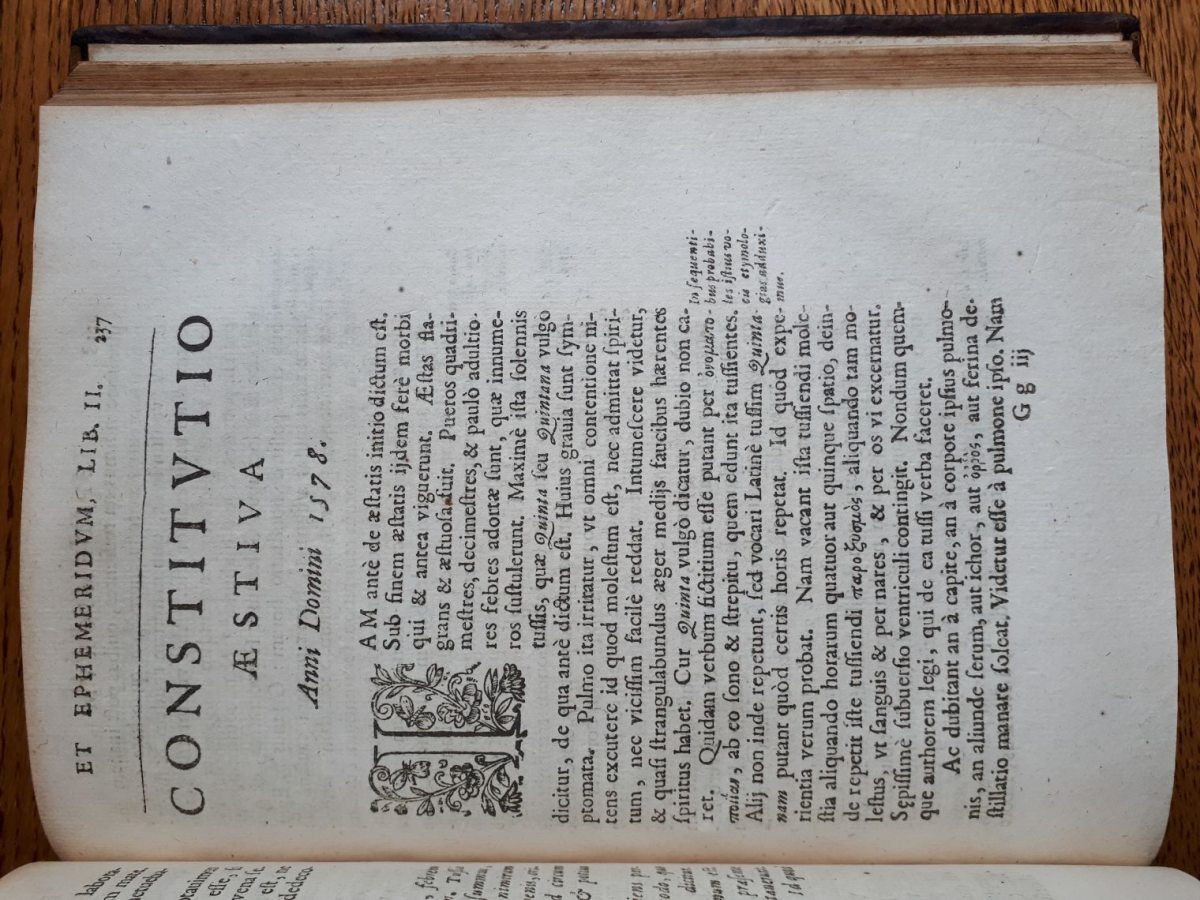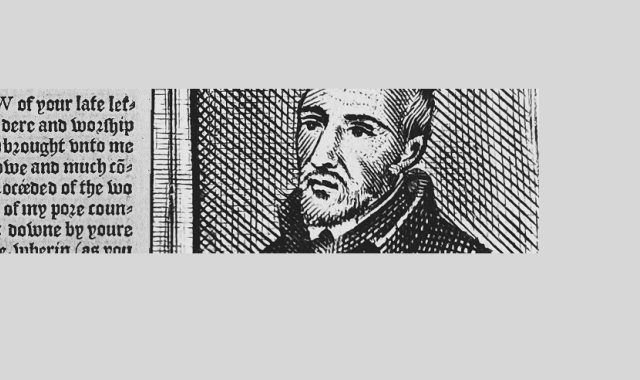Reviving epidemiology
Epidemiorum et ephemeridum libri duo (Epidemics and ephemerides, in two books), by Guillaume de Baillou. Printed in Paris by Jacques Quesnel, 1640. Lower Library, K.3.16(1)
The Paris physician Guillaume de Baillou (1538–1616) earned several nicknames: he was ‘the scourge of the bachelors’ for his debating skill while in the university,1 ‘the children’s doctor’ for his skill with young patients – he declined an invitation by Henri IV to be physician to the king’s son Louis2 – and ‘the French Hippocrates’.3 His medical writings, although finished books often complete with dedications, were all published many years after his death by his nephews.4 This volume contains four of the most important.
The comparison to Hippocrates was precise, for Baillou favoured the earlier classic above the systematizing Galen, whose influence had long dominated Islamic, then European medicine. This led Baillou to become ‘the first Occidental epidemiologist since Hippocrates’,5 writing his Epidemiorum et ephemeridum after the example of the latter’s Epidemics.
Ephemerides are journals or daily records, here linking medical observations to climate and other factors external to the body; for Baillou, again following Hippocrates, these factors still include the positions of the stars. Baillou’s observations include an important early description of whooping cough.6
The human temperaments << Reviving epidemiology >> Holey intervention
- Nicolas François Joseph Eloy, ‘Baillou, Guillaume de’, in Dictionnaire historique de la médecine ancienne et moderne (Mons: H. Hoyois, 1778), 1:247.
- Joël Coste and Robert Descimon, ‘Une patientèle médicale parisienne à la fin du XVIe siècle: les malades de Guillaume de Baillou (1538–1616)’, Bibliothèque d’humanisme et renaissance 81, no. 2 (2019): 276.
- Caroline Petit, ‘Guillaume de Baillou (1538–1616) and the “Paris Hippocratics” ’, Medicine Ancient and Modern (blog), September 26, 2013. Petit remarks that Baillou is one of several French physicians to be so called.
- Iain M. Lonie, ‘The “Paris Hippocratics” ’, in The Medical Renaissance of the Sixteenth Century, eds. A. Wear, R. K. French, and I. M. Lonie (Cambridge: Cambridge University Press, 1985), 169.
- Pierre Huard, ‘Baillou, Guillaume de’, in Dictionary of Scientific Biography, ed. Charles Coulston Gillespie, vol. 1 (New York: Charles Scribner’s Sons, 1970), 399.
- Huard, ‘Baillou’, 399.






